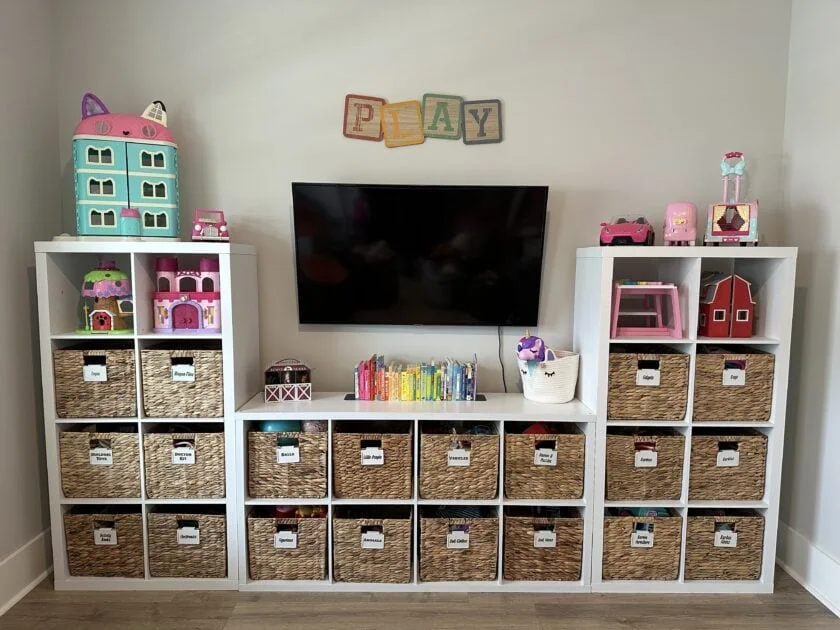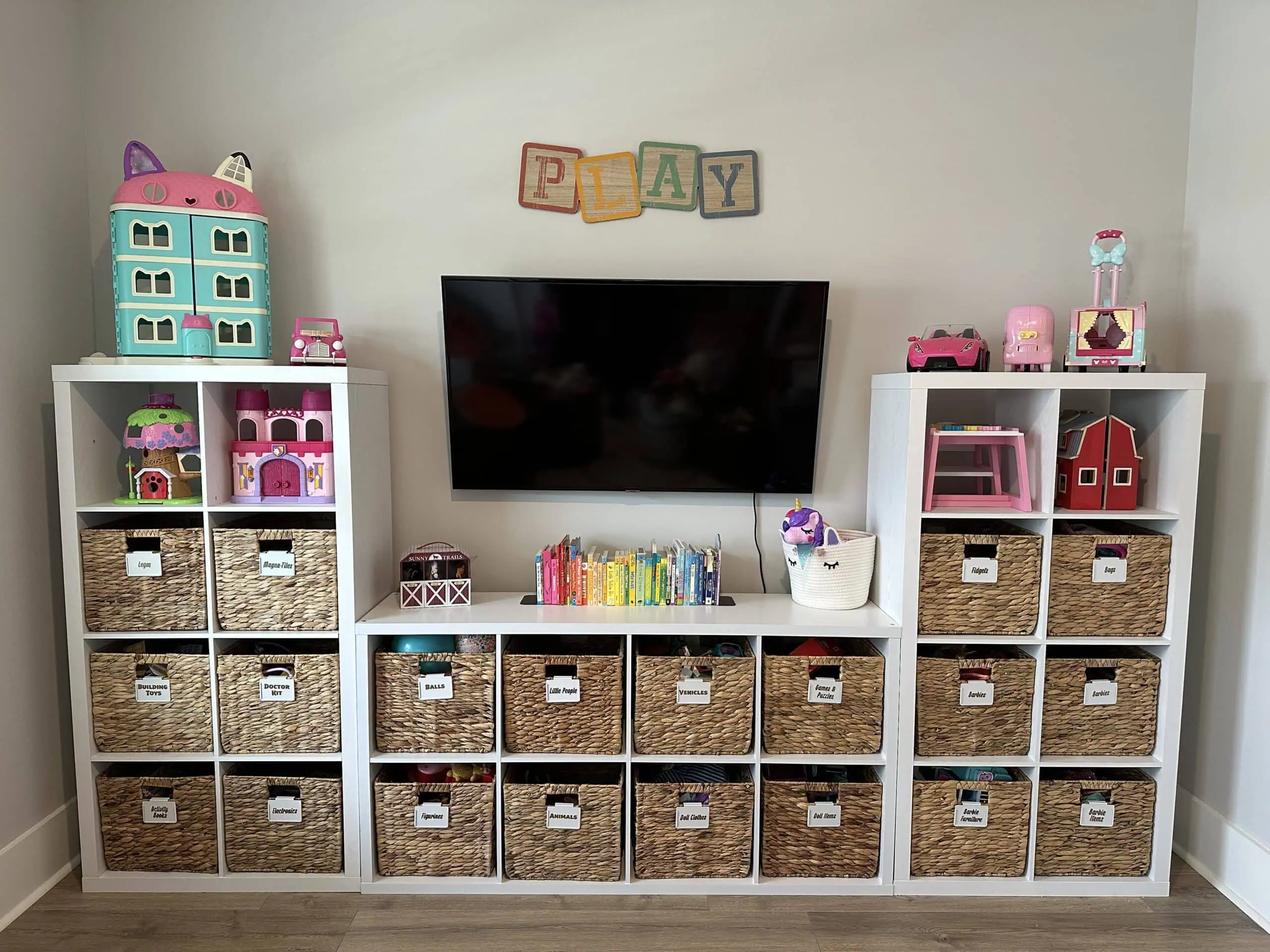Toys can be a source of joy and imagination, but they can also lead to clutter that feels overwhelming. Whether you’re a parent trying to manage the endless collection of playthings, or someone who wants to keep their home neat while making sure kids can easily access their favorite toys, organizing them is essential. In this blog, we’ll explore some simple and effective strategies to help you get toys under control while keeping playtime fun and stress-free!
1. Sort and Declutter
The first step to organizing toys is to sort through them and declutter. Over time, toys accumulate and often become outdated or unused. Here’s how to start:
- Sort by category: Group toys by type (e.g., action figures, dolls, puzzles, building blocks, etc.). This will help you see which categories have an excess and which ones are underrepresented.
- Evaluate condition: Some toys might be broken, missing pieces, or just too worn out. Donate or recycle any toys that are no longer in good condition or that your child has outgrown.
- Consider the frequency of play: Keep the toys your child plays with most often and store or donate those they’ve lost interest in.
2. Use Clear Bins and Baskets
When it comes to organizing, visibility is key. Clear bins and baskets are an easy solution.
- Label everything: Labeling containers by toy type or category will make it easy for kids to know where everything goes, and for you to find things quickly. You can use pictures for younger children who can’t read yet.
- Stackable bins: Invest in stackable bins to maximize space. You can use them for toys that don’t need to be accessed daily, like seasonal items or games with many pieces.
- Rotating toy system: Consider a rotating toy system where only a few toys are out at a time, and the rest are stored away. This not only helps keep things neat, but it also refreshes the toys your child plays with, making them seem new and exciting.
- The Golden Rule: If it doesn’t fit, it’s time to purge! When a designated storage bin or basket is no longer able to hold its contents, it is time to get rid of some toys. Use the size of your bin as an indicator of excess and always maintain your inventory to fit within its allotted space.
3. Create Zones in the Play Area
Designate specific areas of the room for certain types of toys. This helps kids focus their play and makes it easier for them to clean up afterward.
- Themed zones: For example, have a corner for building toys (like LEGO or blocks), a section for dolls and action figures, and another for arts and crafts supplies.
- Use shelves and cubbies: Wall-mounted shelves or cubby systems work well for toys that need to be accessed frequently, as they provide easy visibility and access.
- Multi-purpose furniture: Invest in furniture like storage ottomans or benches that can store toys while also providing seating.
4. Maximize Vertical Space
Utilizing vertical space in your home can significantly free up floor space while also organizing toys efficiently.
- Wall-mounted shelves: Install shelves at kid-friendly heights to store toys, books, and other items. Keep things like board games or small action figures on these shelves.
- Pegboards: A pegboard is a versatile tool for hanging smaller toys, craft supplies, and even costumes. This makes it easy for kids to grab what they need.
- Hanging organizers: Over-the-door organizers or hanging bins can be perfect for storing stuffed animals or smaller toys.
5. Incorporate Toy Storage into Daily Routines
One of the most important aspects of keeping a home organized is involving children in the process of cleaning up and maintaining order.
- Toy rotation: Encourage your kids to put toys back in their bins after playtime. You could make it a game to see how fast they can clean up!
- Accessible storage: Make sure that the toy storage is accessible to kids so they can take toys out and put them away with ease. If it’s too high or difficult to reach, you’ll end up doing it for them.
- Routine cleanup times: Incorporate regular cleanup sessions into the daily routine. I like to encourage tidying up before we transition to a new activity. For instance, set aside a few minutes before going outside, eating lunch, sitting down for dinner, and at the end of the day to organize toys and make sure everything is put away before bed.
6. Make it Fun!
Keeping the toy area organized doesn’t mean it can’t be fun for the kids too.
- Colorful bins and storage: Use bright and fun-colored bins or boxes that match your child’s personality or the room decor. Kids will enjoy putting their toys away if it feels like part of the fun.
- Involve them in the process: Get your kids excited about organizing by letting them help with labeling or sorting toys by color or size. They’ll feel a sense of ownership and pride in the space.
- Create themed storage: If your child loves a particular character, such as superheroes, princesses, or dinosaurs, consider themed storage options that reflect those interests. This can make the space feel more personal and inviting.
- Be patient: Habits take time to form. Don’t expect your children to automatically start picking up after themselves just because you’ve implemented a new organizational system. It will take a few weeks of you holding their hand through the cleanup process and reinforcing the new routine before they are able to tidy on their own.
- *Hot Tip*: Children learn by mimicking. We don’t always realize how much our children are watching us and learning from our behavior that they observe. Show them what it means to take care of their space by doing the same in your own areas!
7. Rotate Toys for Newness
A great way to keep toys interesting and fresh without cluttering your space is to rotate them out regularly. If you’re finding that some toys have become neglected or overplayed, consider storing some of them for a while. A toy rotation system can keep things exciting, and kids will look forward to playing with “new” toys after a brief period of time.
8. Teach Organization as a Life Skill
Teaching kids to organize their toys instills a valuable skill that they can use throughout their lives. Encourage them to be responsible for their own toys, to take good care of them, and to tidy up after playing. Positive reinforcement for maintaining an organized play area can help create good habits that last.
Final Thoughts
A clutter-free home is not only easier to maintain but can also create a more peaceful and enjoyable environment for both adults and children. By sorting through the toys, using clear and accessible storage options, and involving the kids in the process, you can keep toys organized without sacrificing fun. With these strategies, your home can remain organized and tidy, while playtime stays as joyful and imaginative as ever.
Happy organizing!



